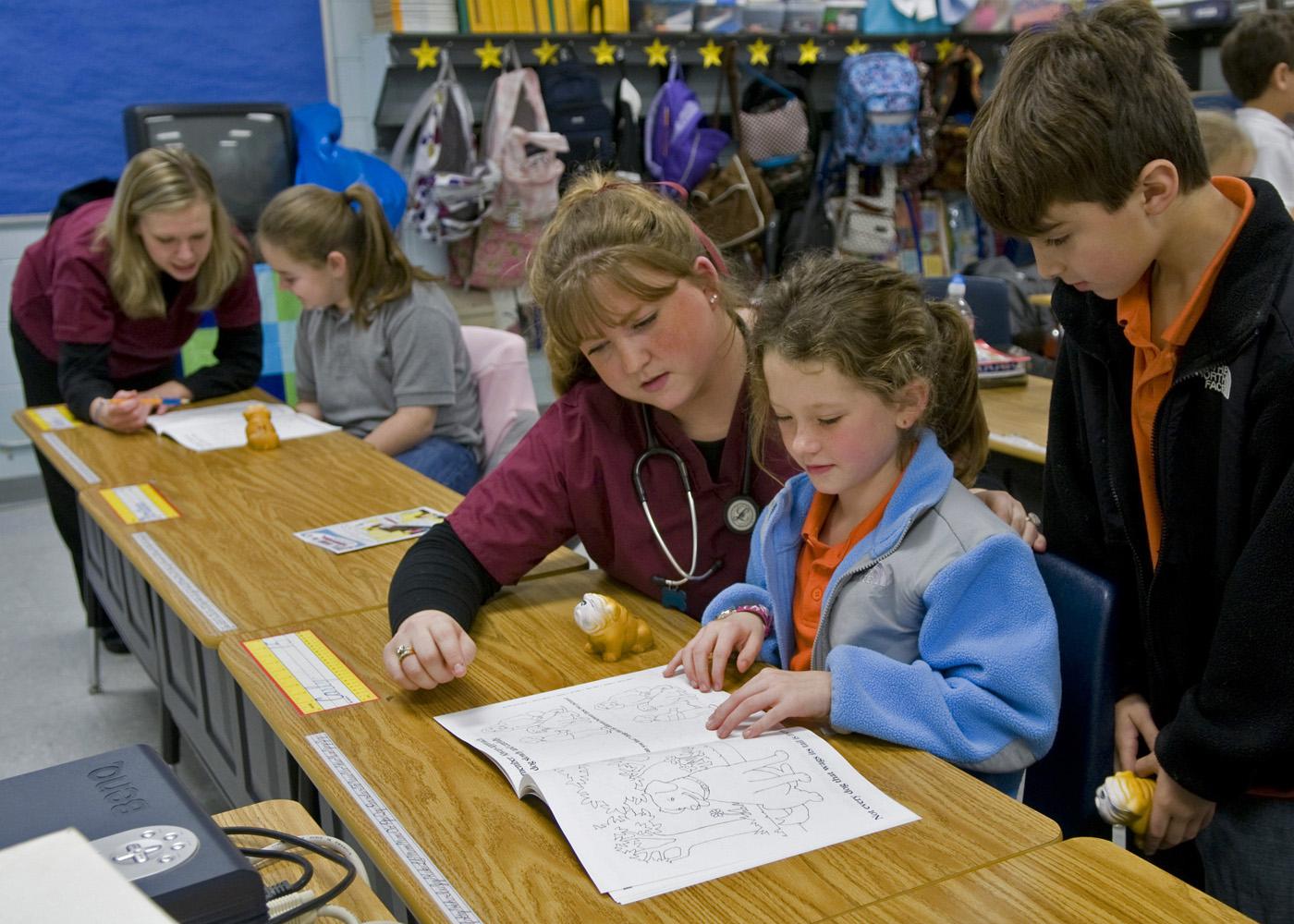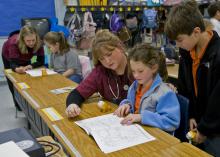Information Possibly Outdated
The information presented on this page was originally released on July 9, 2009. It may not be outdated, but please search our site for more current information. If you plan to quote or reference this information in a publication, please check with the Extension specialist or author before proceeding.
PAWS project educates future animal owners
MISSISSIPPI STATE -- Mississippi State University veterinary students are not satisfied learning about animals themselves; they want to lay the educational foundation for future pet owners, as well.
Pet Awareness With Students, or PAWS, is a pilot project initiated by third-year Doctor of Veterinary Medicine students Shannon Vawter of Horn Lake and Katie Ebers of Jackson. The two students also are pursuing master’s in public health degrees in the MSU College of Veterinary Medicine’s dual-degree option.
Vawter developed a personal interest in educating children about diseases that can move from animals to humans after a friend’s daughter became ill from handling an animal.
“Our goal is to educate children about zoonotic diseases that could harm them. Children who take part in the project not only learn about diseases that they can get from their pets but also diseases they can give their pets,” Vawter said. “We also wanted to evaluate methods of educating children in matters related to public health and animal issues, such as zoonotic diseases, animal behavior, handling pets and veterinary basics.”
Vawter pitched the project idea to Dr. Jody Ray, assistant service chief with Community Veterinary Services. He provided guidance and helped recruit a local school for the project. In the pilot phase of the project, Vawter and Ebers developed age-appropriate lessons for kindergarten through sixth-grade students. They also are determining the feasibility of conducting similar programs at additional schools.
“The lessons varied based on the age of the students,” Ray said. “Kindergarten students enjoyed listening to stories about animals. First- through fourth-graders learned about puppy and kitten care, pet behavior, pet needs and sanitation issues. Fifth- and sixth-graders learned about zoonotic diseases and the role of veterinarians in keeping pets healthy.”
Ray said the veterinary students provide tests before the lessons and again after the lessons to determine how much the children learn from the presentations.
“Some of the teachers really got on board and made treats like worm dirt cake to drive the point home. It was great to see everyone get so excited,” Ray said.
Ebers said that a lot of people, even adults, do not know that turtles and other reptiles carry salmonella and that dogs carry hookworms.
“We want the children to talk at home about what they learned at school concerning zoonotic diseases, pet care and hygiene issues,” she said. “We are hoping they will learn to wash their hands after handling animals and before touching their mouths. We also want them to tell their parents what they have learned.”
Ray said the veterinary students deserve credit for developing a project that will benefit the public and complement their public health research.
“Pursuing a doctor of veterinary medicine degree is hard enough by itself. To choose to add a master’s program at the same time is more than a little impressive,” he said. “The public health emphasis is unique, and combined with this experience working with the public, will make these students very marketable when they graduate.”



